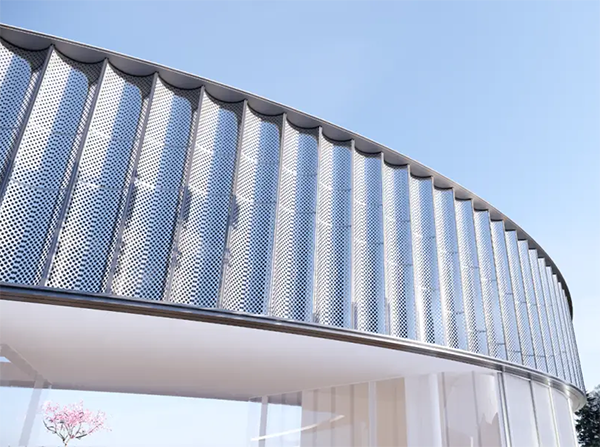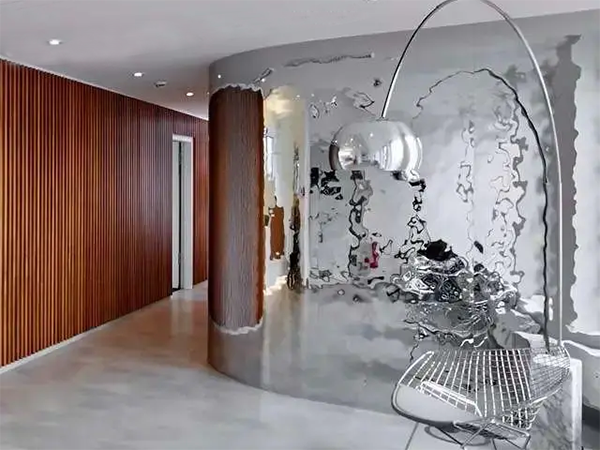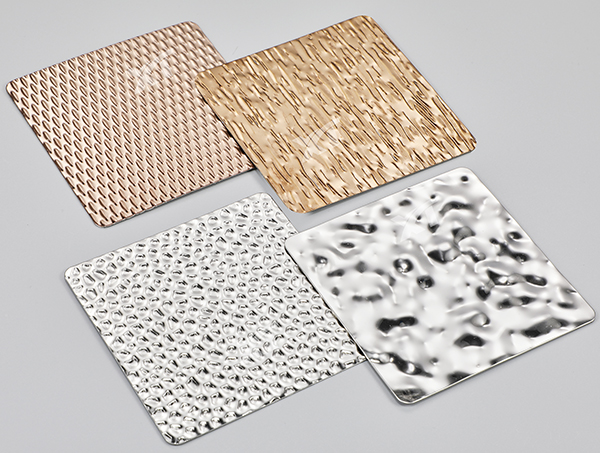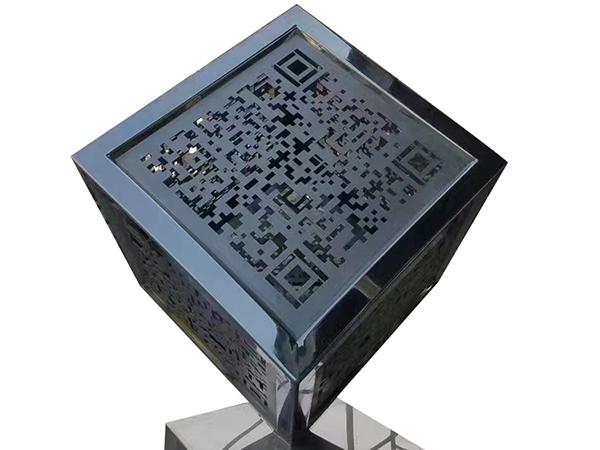
What Is
Perforated Sheet?
A perforated
sheet is a metal sheet that has been punctured with a series of holes in a
pattern. These holes can vary in size, shape, and distribution, depending on
the intended application. Perforated sheets are commonly made from materials
such as stainless steel, aluminum, or galvanized steel.
Perforated
sheets serve a variety of purposes across different industries. They are widely
used for different applications:
l Filtration: Perforated
sheets are used as screens or filters to separate solids from liquids or gases.
They can be found in industries such as oil and gas, water treatment, and food
processing.
l Ventilation: Perforated
sheets are used to allow airflow while still providing protection or
containment. They are commonly used in HVAC systems, automotive components, and
architectural elements.
l Acoustics: Perforated
sheets can be used as acoustic panels to absorb or block sound waves. They are
often installed in theaters, recording studios, and noisy industrial
environments.
l Decoration: Perforated
sheets can be used for aesthetic purposes in architectural design, interior
decoration, and furniture manufacturing. The patterns created by the
perforations can add visual interest and texture to surfaces.
l Safety: Perforated
sheets are sometimes used as safety barriers or guards to prevent access to
hazardous areas or machinery while still allowing visibility and airflow.
Overall,
perforated sheets offer versatility, strength, and functionality, making them a
popular choice for a wide range of applications in various industries.

Today, let’s see
how important perforate sheets play role in decoration industry.
Nowadays
perforated sheets become more and more important in the decoration industry due
to their versatility, functionality, and aesthetic appeal. And they keep some
advantages as below:
Ø  Design
Flexibility: Perforated sheets offer immense design flexibility,
allowing for the creation of intricate patterns, shapes, and designs. They can
be customized to suit specific design requirements, making them ideal for
decorative purposes.
Design
Flexibility: Perforated sheets offer immense design flexibility,
allowing for the creation of intricate patterns, shapes, and designs. They can
be customized to suit specific design requirements, making them ideal for
decorative purposes.
Ø Visual
Appeal:
Perforated sheets add visual interest to various decorative applications. They
can be used to create visually striking features such as decorative screens,
partitions, wall panels, and facades. The patterns and designs created through
perforation can enhance the overall aesthetics of a space.
Ø  Lighting
and Acoustic Control: Perforated sheets are often used in
lighting fixtures and acoustic panels. They allow for the passage of light and
sound while providing a decorative element. By controlling the distribution of
light and sound, perforated sheets contribute to creating a more visually
appealing and acoustically comfortable environment.
Lighting
and Acoustic Control: Perforated sheets are often used in
lighting fixtures and acoustic panels. They allow for the passage of light and
sound while providing a decorative element. By controlling the distribution of
light and sound, perforated sheets contribute to creating a more visually
appealing and acoustically comfortable environment.
Ø Ventilation
and Airflow: In architectural and interior design, perforated sheets
are utilized for ventilation purposes. They are commonly used in HVAC systems,
ceilings, and walls to facilitate airflow while maintaining a decorative
appearance.
Ø Privacy
and Security: Perforated sheets can be employed to provide privacy
and security without sacrificing aesthetics. They are often used in fencing,
gates, and window coverings, allowing for airflow and visibility while creating
a decorative barrier.
Ø Material
Variety:
Perforated sheets are available in a wide range of materials including metals
like aluminum, stainless steel, and copper, as well as plastics and composites.
This variety of materials expands their applications in decoration, catering to
different design styles and requirements.
Ø Durability
and Maintenance: Depending on the material used, perforated sheets can
offer durability and ease of maintenance, making them suitable for both indoor
and outdoor decorative applications. Materials like stainless steel and
aluminum are corrosion-resistant and require minimal upkeep.
Overall,
perforated sheets are essential in the decoration industry for their ability to
combine functionality with decorative appeal, offering endless possibilities
for creative design solutions.

What's The Difference Between Stainless Steel Perforated
Sheet And Aluminum Perforated Sheet?
Stainless
steel perforated sheets and aluminum perforated sheets are both popular
materials used in various industries for their perforated sheet applications.
While they share some similarities, there are also notable differences.
v Material
Composition:
Stainless
Steel: Stainless steel is an alloy primarily composed of iron, with varying
amounts of chromium, nickel, and other elements. This alloy composition gives
stainless steel its corrosion-resistant properties, making it highly durable
and suitable for outdoor and high-moisture environments.
Aluminum:
Aluminum is a non-ferrous metal known for its lightweight properties. It is
naturally resistant to corrosion due to the formation of a protective oxide
layer on its surface. However, it is not as corrosion-resistant as stainless
steel and may not be suitable for applications where exposure to harsh
environments or corrosive substances is a concern.
v Strength
and Rigidity:
Stainless
Steel: Stainless steel perforated sheets are generally stronger and more rigid
compared to aluminum perforated sheets of similar thickness. This makes
stainless steel perforated sheets suitable for applications requiring higher
strength and durability.
Aluminum:
While aluminum is lightweight, it is not as strong or rigid as stainless steel.
Aluminum perforated sheets may be preferred for applications where weight is a
concern or where a more flexible material is needed.
v Cost:
Stainless
Steel: Stainless steel perforated sheets tend to be more expensive than
aluminum perforated sheets due to the higher cost of stainless steel raw
materials and the additional processing required.
Aluminum:
Aluminum perforated sheets are generally more cost-effective compared to
stainless steel, making them a preferred choice for projects with budget
constraints.
v Appearance:
Stainless
Steel: Stainless steel has a shiny, metallic appearance that can lend a modern
and sophisticated look to applications. It is often used in architectural and
decorative applications where aesthetics are important.
Aluminum:
Aluminum has a matte finish and is available in a variety of colors and
finishes. It can provide a sleek and contemporary appearance to applications,
but it may not have the same visual impact as stainless steel.
In
summary, the choice depends on many factors such as the application
requirements, budget, desired aesthetics, and environmental conditions.
Stainless steel offers superior strength and corrosion resistance but comes at
a higher cost, while aluminum is lightweight, cost-effective, and versatile but
may not be as durable in harsh environments.

How To Select Suitable Perforated Sheets, Stainless
Steel Sheets, Aluminum Sheets or Metal Sheets?
To select
suitable perforated sheets, whether they are made of stainless steel, aluminum,
or other metals, some factors should be under consideration:
u Application
Requirements: Determine the specific requirements of your application. Consider
factors such as strength, corrosion resistance, weight, durability, and
aesthetic preferences.
u Environmental
Conditions: Assess the environmental conditions the perforated sheets will be
exposed to. For example, if the application will be outdoors or in a corrosive
environment, stainless steel may be preferred for its corrosion resistance.
Aluminum is also corrosion-resistant but may not be as suitable for highly
corrosive environments as stainless steel.
u Budget
Constraints: Consider your budget constraints. Stainless steel perforated
sheets are typically more expensive than aluminum or other metal options. If
cost is a primary concern, aluminum or other metals may be more suitable.
u Strength
and Rigidity Requirements: Evaluate the strength and rigidity requirements of
your application. Stainless steel perforated sheets are generally stronger and
more rigid compared to aluminum and other metals of similar thickness. If high
strength and rigidity are necessary, stainless steel may be the better choice.
u Weight
Considerations: Consider the weight of the perforated sheets, especially for
applications where weight is a concern, such as transportation or architectural
design. Aluminum is lightweight compared to stainless steel and may be
preferred for weight-sensitive applications.
u Aesthetic
Preferences: Determine the desired aesthetic appearance of the perforated
sheets. Stainless steel offers a shiny, metallic appearance that can lend a
modern and sophisticated look to applications. Aluminum is available in various
colors and finishes and can provide a sleek and contemporary appearance. Other
metals may offer unique aesthetic properties depending on the material and
finish.
u Customization
Options: Consider the customization options available for the perforated
sheets. Both stainless steel and aluminum perforated sheets can be customized
in terms of hole size, shape, pattern, and spacing to meet specific design
requirements.
By carefully evaluating these factors, you can select the most suitable perforated sheets, whether they are made of stainless steel, aluminum, or other metals, for your specific application. Or Consulting with a knowledgeable supplier or manufacturer can also provide valuable insights and assistance for your needs.








